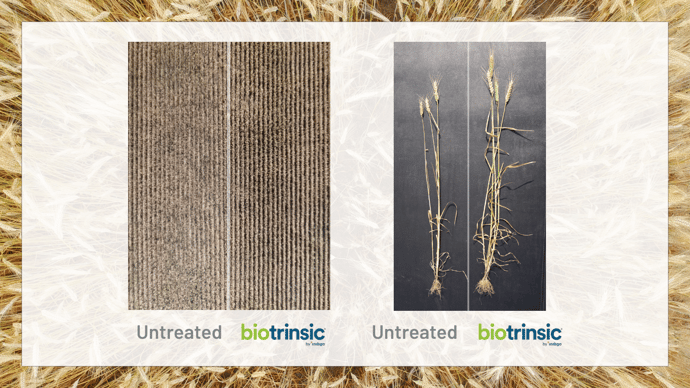Farmer Pain Points: Hot, Dry Wheat Conditions
It’s no secret there’s a drought impacting the American West.
These hot, dry conditions across the West have been a big stress for farmers and their crops, particularly winter wheat. And that stress is impacting yields. According to the USDA’s National Agricultural Statistics Service (NASS), 2022 winter wheat production is forecasted to be down 7% from 2021 (as of June 10, 2022).
Market prices are closing the gap some. “If a grower was fortunate enough to get adequate rainfall and good yields, the profit potential will be very good with the high price of wheat,” says Shannon Gnad, Indigo’s Sales Director in the West, who is also a wheat farmer.
Profit increase or not, now is the time to plan ahead with an “insurance policy” to give next season’s wheat crops a boost in resilience in these continued stress conditions.
Beating the Heat (and Wind)
“Wheat in hot, dry conditions is going to want to put out seed as soon as possible, which means not putting as much into the stem or tillers. It's just a natural response to that sort of stress,” says Indigo technical services manager Chris Lobemeyer, who grew up on a wheat farm in Kansas. Today he spends his time working with U.S. wheat farmers battling heat, drought, and high-wind conditions in Kansas, Oklahoma, and Texas.
This season, Lobemeyer worked with a farmer in Greensburg, Kansas, whose farm was pretty dry and saw quite a bit of stress throughout the winter and early spring. They treated some of his fields with biotrinsic® M36. The results were undeniable.
“When we compared the side treated with biotrinsic® M36 versus non-treated, we saw a lot more tillers. The heads on the non-treated plants were about half the size of the heads on the treated plants. That's definitely going to bring about good yield differences. Also the root mass was much larger, which keeps the plant greener longer and gives it a few days advantage as far as waiting for rain.”
“Drought Insurance” for Wheat
And with ongoing droughts like these, the wait for rain is a serious concern.
“More than anything else, it’s a bit of a drought insurance,” says Lobemeyer about using biotrinsic® on wheat. “Two out of three years, you're going to see a significant yield bump and it's going to more than pay for itself,” says Lobemeyer. “This year, I'm getting probably two-to-five bushel an acre yield bumps. And some of that wheat got sold at $12 a bushel, so that's not a bad return on investment.”
3 Farmer Case Studies
Lobemeyer worked with three wheat farmers in Kansas who experienced positive results and a bump in yield.
Locations: Gray County, Meade County, and Kiowa County, Kansas
Soil Type: Sandy loam to clay silt load
Stressors: Drought, heat, wind
biotrinsic® Formula Applied: M36
Results:
-
- Larger root mass
- Longer roots
- More tillers retained during dry spring
- Larger heads
Yield Impact: Increase yield of 2-5 bu/acre



